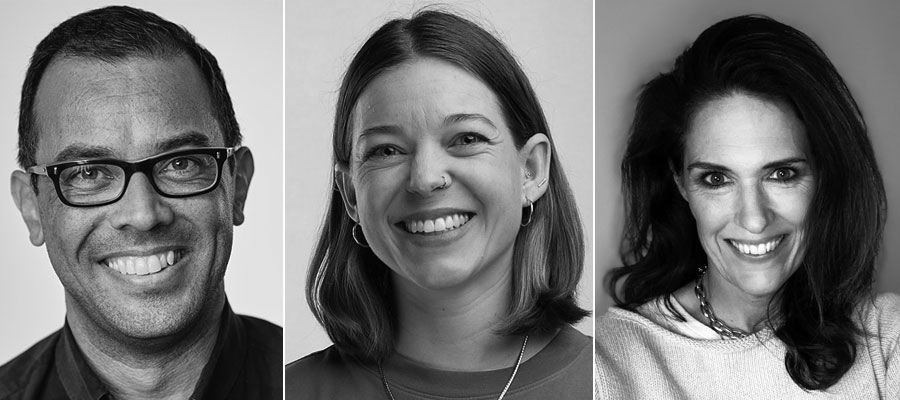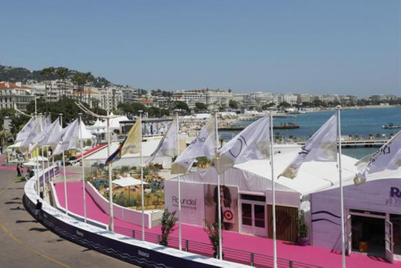
Soon after we started working on “Five ways to win in America,” our feature on how Canadian advertising can compete—and win—against U.S. competition, we started talking about New Zealand.
The central question for us was, “How can Canada punch above its weight enough to beat much larger markets?” When thinking about ad markets that punch above their weight, New Zealand comes quickly to mind.
From the first time I covered the Cannes Lions in 2008 and each subsequent visit (eight in all) I’ve been struck by the winning work coming out of New Zealand. Not just the number of Lions won—which always felt like more than should be expected from such a small market—but also by the originality and personality of the work. Every year there was a Kiwi campaign that stayed with me long after I returned home. Last year, for example, there was this and this.
While success in Cannes is not the sole gauge of a market’s vitality or strength, I always wondered how such a small market could have such an outsized impact on the world’s biggest advertising stage. Since 2010, New Zealand has won 266 Lions. In that same period Canada won 321. That means Canada has won about 21% more Lions. Yay Canada.
But look closer and another story emerges. First there is the difference in size between the two markets: Canada’s population, economy and ad industry are all about seven to eight times bigger than New Zealand. All things being equal, Canada should be winning a lot more Lions—more than 21% more.
Where it gets even more revealing is when we look at the winning percentages.
Since 2010, New Zealand has made 4,722 total submissions to Cannes, compared to Canada’s 12,751. That means about 5.6% of New Zealand’s entries converted to Lions, more than double Canada’s 2.5%
If Canada had that winning percentage, we would have brought home 71 Lions last year instead of 48, comfortably in fourth behind only the UK and Brazil (both with 84) and of course the United States (218).
So, what gives? What is New Zealand doing right, and are there pages from the Kiwi playbook that Canada can steal to raise its global stature?
Campaign spoke with four New Zealander agency executives with experience in their home country and in Canada to ask about differences between the two markets, and what is preventing Canada from earning the same kind of reputation for commercial creativity that New Zealand has.

André Louis, Bronwyn Mackay, Maria Devereux
All speak fondly of Canada. Two, André Louis, president of The & Partnership in Toronto, and Jill Dewes, partner and chief experience officer at Daughter Creative in Calgary, still work here. The other two, Bronwyn Mackay, who spent almost seven years at Wasserman in Vancouver, where she was eventually named creative director, and Maria Devereux, who spent more than three years as an art director at Taxi, left for family reasons. “I was never leaving Toronto,” said Devereux, who is now now ECD and head of innovation, for Accenture Song in L.A. “Even when the winters were brutal, I loved it.”
But all four shared theories about why New Zealand enjoys the creative successes that Canada aspires to.
The observations covered a lot of ground but, broadly speaking, fell under two fundamental differences that are mutually reinforcing in a virtuous cycle for the New Zealand industry: The marketers are braver and expect more from their agencies, while the agencies themselves are hungrier, hustle harder and are scrappier than their Canadian counterparts. That last one may sting a little, because “being scrappy” is what Canadian advertising prides itself on (more on that below).
Kiwi marketers—less adapt
One of the important challenges for Canadian advertising that we talked about at length in “Five ways to win in America” was the long-time irritation of international brands treating Canada as a 51st state and simply adapting U.S. work for the market. That is not an issue in New Zealand.
As a rule, marketers and brand leaders do not, as an obvious example, pick up and adapt Australian campaigns. “You wouldn’t dare run an ad in New Zealand that was made in Australia because it would look and sound different and, holy shit, the backlash would be unbelievable,” said Louis.
And there’s a sense that because it is such a small market flying under the radar of head offices, marketers are willing to try bigger, braver ideas. “You can get away with a lot more there because it’s so far away. It creates a freedom that I’m not necessarily sure that clients here [in Canada] fully enjoy,” said Louis.
“Because it's such a small market… It sort of gets left to its own devices a little bit, so it's allowed to go a bit rogue”
Maria Devereux
“I think New Zealand can be a little bit more nimble because the budgets are that much smaller and there's less eyeballs on the CMOs in terms of what results we're getting for this investment,” said Devereux. “Because it's such a small market… It sort of gets left to its own devices a little bit, so it's allowed to go a bit rogue.”
These differences feel foundational to Kiwi commercial creativity—defining attributes that help shape the culture of the industry. One practical difference that illustrates the point came up multiple times: the relative absence of creative testing in New Zealand.
“With more money comes more expectation around business results and more pressure on the work,” said Devereux. “Researching work is not something we do in New Zealand… And a lot of good work dies in research, obviously.”
“I had never done ad testing until I moved to Canada. It was a bit of a shock to the system that there were certain marketers who just wouldn’t move without a set of greens on ad testing,” said Louis. “That brings its own formula of conformity to a bunch of things. It can be a little bit paint-by-numbers, which hurts creativity.”
“A really great advertising campaign [could] become part of the culture. It wasn't just industry folks who knew about it, everybody talked about it. It was newsworthy, so there was a lot more of a psychological incentive for a marketer to be brave because that's how they built their own careers”
Kiwi marketers—more bravery
Several of the Canadian ad industry experts who spoke with us for “Five ways to win in America” expressed frustration that our brand leaders tend to be risk adverse and overly cautious—qualities that don’t lead to the best creative work.
That abundance of caution was one of the first things the Kiwis noticed when they arrived in Canada.
“When I first came here, I was quite shocked at how cautious and conservative the clients are here, versus what I was used to in New Zealand and Australia,” said Louis.
“I wanted more bravery from the CMOs than what I saw,” added Devereux.
Mackay wonders if that the apparent bravery of New Zealand’s marketers stems from having more trust in agency partners to do the most with small budgets.
“Clients in New Zealand are like, ‘Okay, this is your expertise. It's not that I feel like I'm taking this big risk and I'm having to be brave. It's just I have this problem. You are the best ones to figure it out,’” she said. Because New Zealand brands are, generally speaking, more willing to trust their agencies, they are also more willing to accept out-of-the-box ideas, whereas in Canada there’s a tendency to do things a certain way because “that is how it’s done,” she said. “There was some good work, but it felt more difficult to push outside of what was expected.”
Dewes, too, believes New Zealand marketers are bolder than in Canada, and that may be because the country tends to celebrate brave marketing. “When you did a really great campaign over there, the marketers themselves got a ton of kudos from it,” she said.
“A really great advertising campaign [could] become part of the culture. It wasn't just industry folks who knew about it, everybody talked about it. It was newsworthy, so there was a lot more of a psychological incentive for a marketer to be brave because that's how they built their own careers.”
Perhaps inevitably, the marketer appetite for the best, boldest most breakthrough creative has produced a more competitive and hard-driving agency culture, with creatives eager to deliver the best work possible.
Kiwi agencies—scrappier and more innovative
Over and over again in our reporting for “Five ways to win in America,” we were told that Canadian creatives excel in other markets because our comparatively small budgets lead to well-rounded, innovative professionals who have to be scrappy. This word came up a lot.
The Kiwis, though, have a different POV.
“[New Zealand is] a tiny market, but there was a real desire across the industry to punch above our weight creatively. That really challenging mindset is absolutely loud and clear there, and I didn’t sense it in the same way when I came here”
André Louis
“I’ve got a maybe slightly contrarian view on that scrappy market,” said Louis, referring to Canada. “[New Zealand is] a tiny market, but there was a real desire across the industry to punch above our weight creatively. That really challenging mindset is absolutely loud and clear there, and I didn’t sense it in the same way when I came here.”
Without being critical or dismissive of Canadian creatives, the New Zealanders feel their colleagues and compatriots are more competitive and motivated then those in Canada. That probably shouldn’t be surprising. After all, the underlying dynamics cited for producing uniquely skilled creatives in Canada with a just-get-it-done attitude, ie. small budgets, are amplified in New Zealand: if small means scrappy in Canada, even smaller means even scrappier in New Zealand.
Similarly, Canadians we spoke to also told us that the smaller budgets mean they have long looked for ideas and creativity that doesn’t rely on big production budgets, casting celebrities, or an over-reliance on big TV buys.
But here, too, the even smaller budgets in New Zealand mean an even greater emphasis on creative innovation.
“We don't make great film in New Zealand because we just don't have the budgets,” said Devereux. “So you have to be really, really resourceful.”
“I think innovation is part of our psyche,” added Mackay. “You're never comfortable with status quo or doing things the way they've always been done.”
Kiwi agencies—proactive not reactive
The Kiwis also spoke about a much more proactive approach to the work compared to Canada. You didn’t need to be briefed, you just did it. In many cases, the brief was treated like a first hurdle to be cleared on the way to much bigger and better creative solutions.
“[Being] proactive is hugely encouraged,” said Mackay. In any agency, only about 10% of briefs are truly challenging where creatives get to “to run wild,” she said. The other 90% are simply hard work without a lot of opportunity to stretch creative legs. “You need the proactive [work] to keep you fresh, keep exercising that creative muscle.”
That attitude is instilled in young creatives from their first days in the industry. Many of them form creative partnerships early and stay together, jumping around from one agency to the next looking for opportunities to build their books. Whereas many Canadian agency CEOs might look cynically at a lot of movement , the Kiwis we spoke with view it as proof of ambition, a desire to grow and try new things.
“In Auckland anyway, two years, three years, and you’ve got to go, you got to move… that was how you stayed competitive, stayed fresh,” said Mackay. “That's also what fueled this overall really competitive market.”
“If you didn't get briefed on a job, you were kind of working on it anyway,” agreed Dewes. “You sort of muscled your way [in]… it was like, ‘I will do this off the side of my desk and I will kill it.’ It was kind of viciously competitive.”
And the creative directors could be tough, to say the least. “It wasn't super nurturing,” said Dewes. “It was very much like ‘What else do you got? I’m ripping this up.’ It breeds a thick skin and you either hate it or you're in there and then you're resilient, and you're just pitching, pitching, pitching all the time.”
“At Colenso [BBDO], we had a weekly sessions with creatives where you turn up with proactive ideas, and I did try to instigate things like that in Canada and it didn't really take off,” said Devereux.
“I suppose that demonstrates that there's not the same kind of desire to hustle and chase things.” But she also recognizes that may be because too many creatives in Canada never get clients to accept those proactive ideas.
While acknowledging the need for work-life balance, Devereux thinks that young creatives would benefit from a more competitive creative culture with “a bit more fire to kind of get them going and feel like they're part of something, get excited and get stuck in and not get complacent,” she said. “When you're learning, it's easy to just sit back. If you didn't have that fire underneath you it can be hard to then build up that work ethic.”
Dewes also recognizes that there’s a fine line between being fired up and burned out. “It was probably a toxic culture,” says Dewes. “I actually think New Zealand was too much of a hustle-culture in many ways, and there was a ton of burnout, but I think you need both.”
Kiwi advice for Canucks
One of the key takeaways from our “Five ways to win in America” feature was that while the Canadian ad industry has been doing well, it is capable of so much more and should be aiming higher. The talent pool is deep, and Canadian agencies can go head-to-head with the best in the world—including the U.S.
And while the New Zealanders were unequivocal that the ad industry culture is different in their homeland, they, too, think Canada is capable of more and reaching higher heights. “It’s okay to be ambitious,” said Louis.
“I would love to see our industry really champion the power of creativity and be prouder of…what we do,” said Dewes. “Brands are incredibly important to the economy, and we should be celebrating that more. I love seeing brave and bold clients recognized by our industry."
Both Devereux and Mackay used the same word when asked how Canada can do better: Confidence.
“What if we just go for it, what's the worst that can happen? Nothing"
Bronwyn Mackay
“The one thing that I would change is more confidence and trust in the ideas,” said Mackay. “What if we just go for it, what's the worst that can happen? Nothing. Because we're going to answer the brief first, but what if we also [delivered something that] is not even part of it, this might be a brand-new insight. More of that I think would be so great,” she said.
“It’s probably about confidence,” said Devereux. “Canadians should be proudly Canadian versus looking at what the U.S. are doing all the time. Being cool is really about being cool with yourself. And I think Canada could do with being a little more cool with itself and forgetting about what the U.S. is doing.”




.jpg&h=334&w=500&q=100&v=20250320&c=1)
.jpg&h=334&w=500&q=100&v=20250320&c=1)
.jpg&h=334&w=500&q=100&v=20250320&c=1)
.jpg&h=334&w=500&q=100&v=20250320&c=1)
.jpg&h=334&w=500&q=100&v=20250320&c=1)



.jpg&h=268&w=401&q=100&v=20250320&c=1)
.jpg&h=268&w=401&q=100&v=20250320&c=1)
.png&h=268&w=401&q=100&v=20250320&c=1)

.jpg&h=268&w=401&q=100&v=20250320&c=1)

.jpg&h=268&w=401&q=100&v=20250320&c=1)
.jpg&h=268&w=401&q=100&v=20250320&c=1)